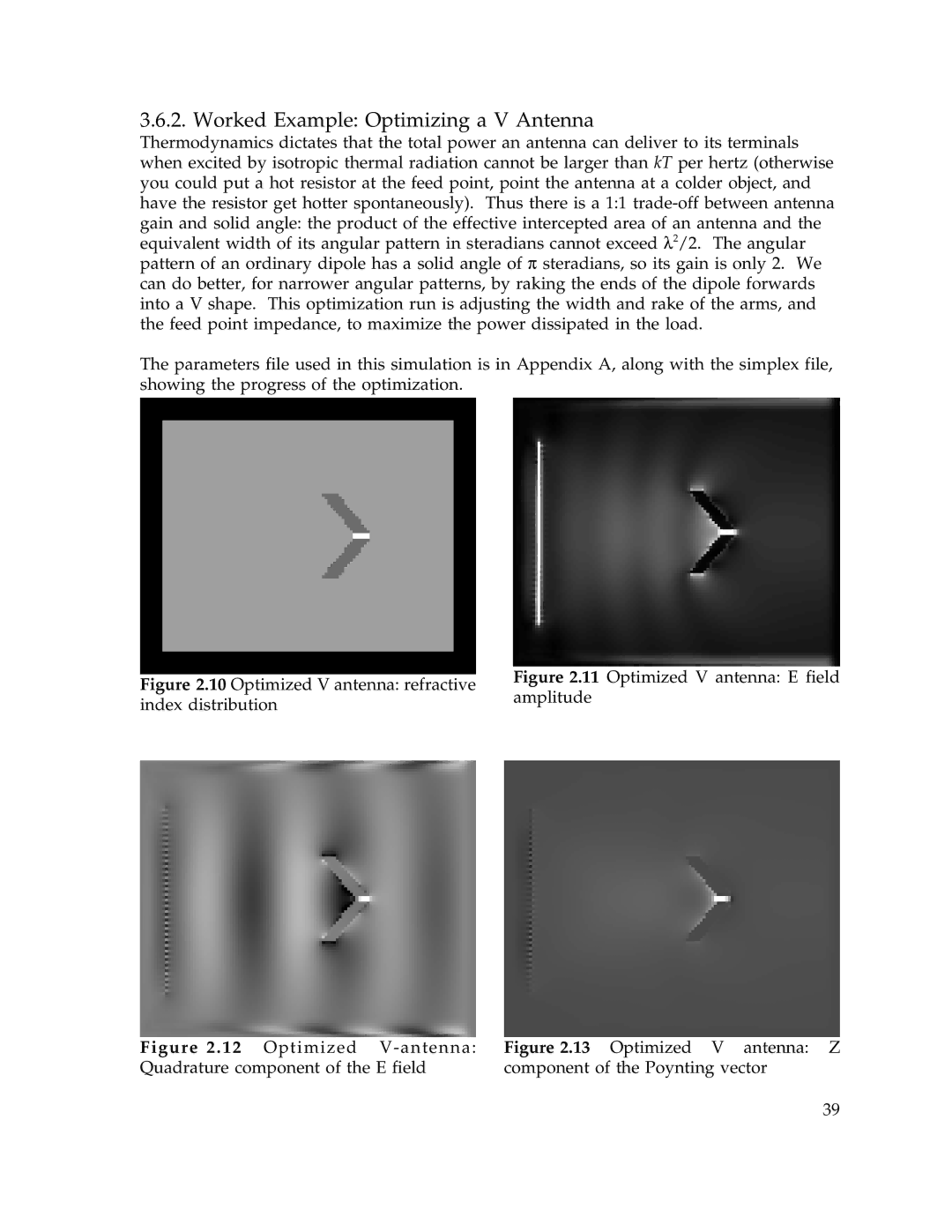
3.6.2. Worked Example: Optimizing a V Antenna
Thermodynamics dictates that the total power an antenna can deliver to its terminals when excited by isotropic thermal radiation cannot be larger than kT per hertz (otherwise you could put a hot resistor at the feed point, point the antenna at a colder object, and have the resistor get hotter spontaneously). Thus there is a 1:1
The parameters file used in this simulation is in Appendix A, along with the simplex file, showing the progress of the optimization.
Figure 2.10 Optimized V antenna: refractive | Figure 2.11 Optimized V antenna: E field | |
amplitude | ||
index distribution | ||
|
F i g u r e 2 . 1 2 Optimized | Figure 2.13 Optimized V antenna: Z |
Quadrature component of the E field | component of the Poynting vector |
39
